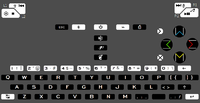Saber
Advanced Member
- Joined
- Jan 23, 2012
- Messages
- 1,303
I couldn't do a P + 2 and L + 2 on my layout like on full-size keyboards but I did set it up so it's Y + 2 and H + 3. For the uninitiated, this means the user can choose to remap their local alphabet, if they happen to be non-German, to AltGr + i or o on the third row and AltGr + j or k or l on the second row. Replace any of the umlauts, micro, and section sign that are already there.According to http://boards.openpandora.org/topic/16868-the-big-pyra-keyboard-poll//URL] it leans towards P+2 L+2 so that we dont have to deal with it.
Last edited by a moderator:


